Art, Culture, and Small Museums in the Cyclades
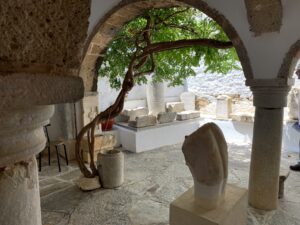
The tiny archeological museums on Amorgos and Naxos were filled with artifacts found on those islands. The intimacy of the spaces, the variety of different types of sculptures, the sense of discovery make visits to these museums delightful.
The first museum that we visited was the Archeological Collection of Amorgos, in the Chora, the old and picturesque capital of the island.
Housed in a former Venetian style mansion, the artifacts documented the long long history of the island. In these photos you see the picturesque courtyard with various artifacts to discover. We even had a guided tour of the inside rooms of the museum!
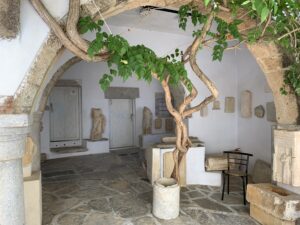
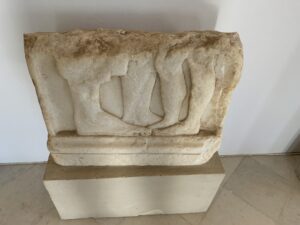
This is a fragment of a late Archaic grave stele carved by an artist from Paros in the late 5th c BC!
Or below is a Roman relief found in the bay of Aigiali Bay at the other end of the island from the museum
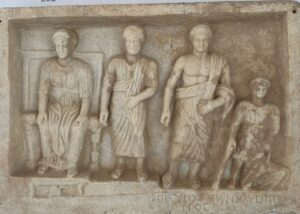
There is even a catalog of the museum by the outstanding excavator Lila Marangou
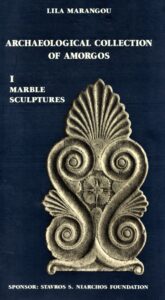
This map shows archeological sites on Amorgos ( hard to see)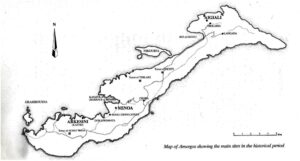
And here is a diagram of a neolitihic site on Amorgos drawn by my sister in law Carolina who lived nearby.
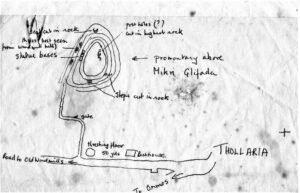
Of course the most famous early Cycladic sculpture of all was found on the island of Keros near Amorgos. It is now in the National Museum in Athens, but there are many versions of it in the small museum on Naxos in their Chora
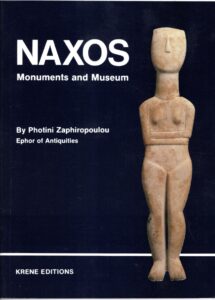
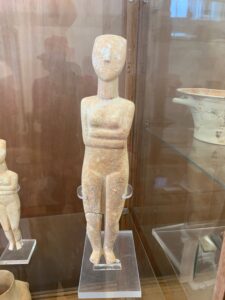
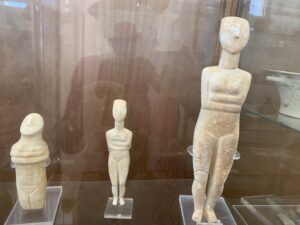
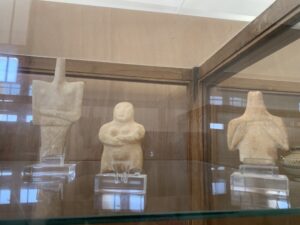
We also saw fragments lined up in an even smaller museum in the village of Apeirianthos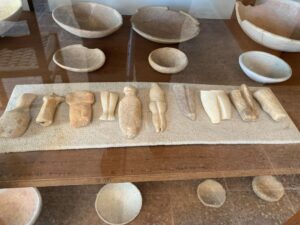
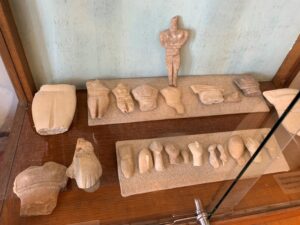
All of these Cycladic women date to 2800 – 2300 BC. ! Their odd pose with arms crossed across their torso perhaps suggests protection. Also odd is that the face only features the nose, no mouth or eyes.
These small museums also had other delights. In the Museum in Naxos we saw many octopus vases, one of my favorite depictions. 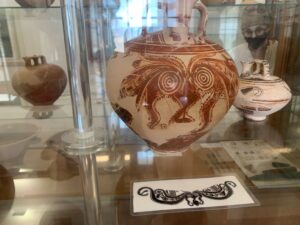
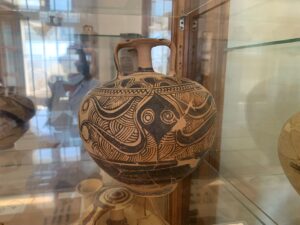
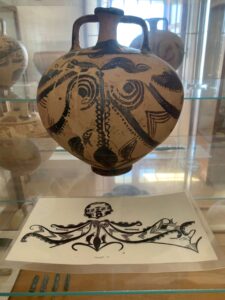
We also saw real octopus in front of restaurants. Comparing them to the vase paintings, I think the one in the middle shows the Octopus organs that appear on the vase. Not sure about the anatomy of the octopus!
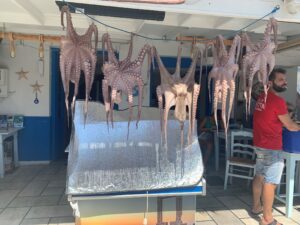
On Naxos we took a tour that allowed us to visit many villages.
Here is the map of the island.
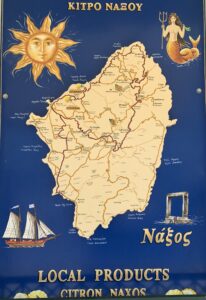
Most exciting for me was the Temple of Demeter, the only temple we saw on the trip.
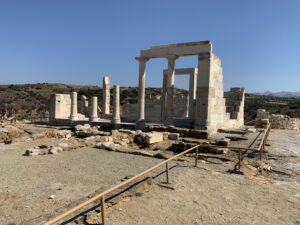
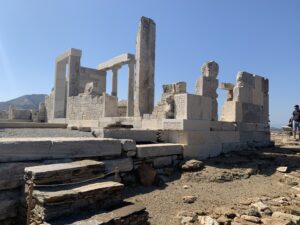
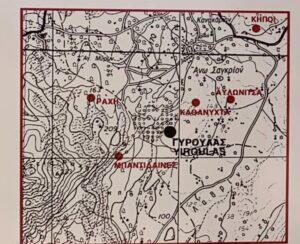
This is a map of the ancient area when the local agricultural people worshipped earth deities such as Demeter on the hill top. They worshipped in the open air with offering pits (brown on the plan.)
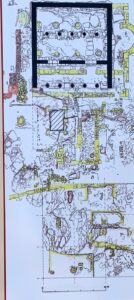
You can see the plan of the marble temple here in black, built in the early 6th c BC when the community became more prosperous. Apparently it is an important example of an early classical ionic temple.
In the early Christian period the temple was converted into a church ( yellow on the plan)
The site was excavated between 1994 – 2000 sponsored by the University of Athens and Munich Polytechnic.
In addition to the temple, there was a small museum which I loved because they took a few pieces and showed us where they went, here on the body of a standing man and below on a pediment.
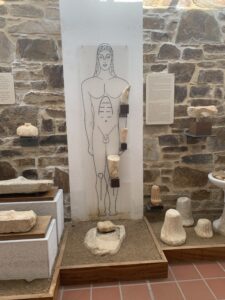
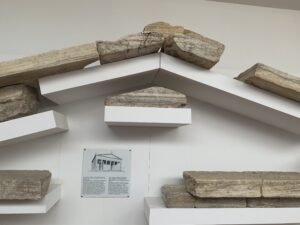
From this stunning temple, we went on to the village of Damalas
where we saw a restored olive press
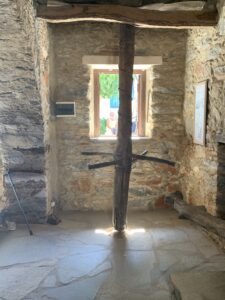
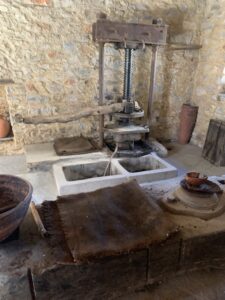
Our guide explained how it all worked. People pulled the spokes that you see in one photo. You also see the actual press and the pits where the olive oil was probably separated from the water.
Next we visited a pottery studio. The owner explained that he was a fourth generation potter and his daughter in the next room was the fifth generation.
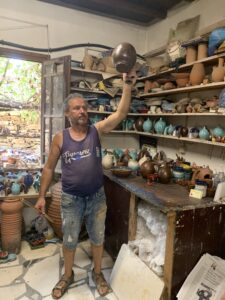 I bought a smaller version of the pot he is holding up, apparently a traditional vessel for drinking wine.
I bought a smaller version of the pot he is holding up, apparently a traditional vessel for drinking wine.
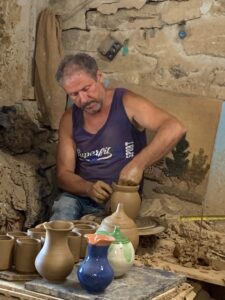
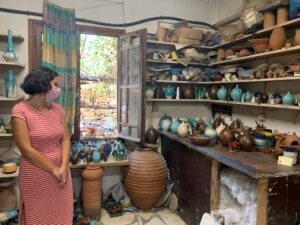
Next a distillery for Kitron, in the village of Chalki. Kitron is a fabulously delicious liquor, I wish we had bought a bigger bottle. They had an intriguing logo of people on a small boat, not sure how that refers to distilling lemons. It was founded in 1896
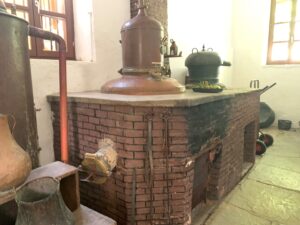
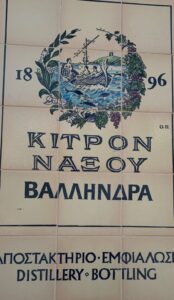
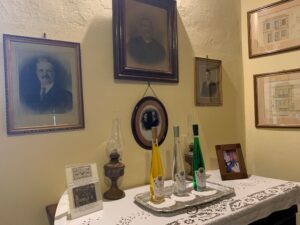
The founders of the brewery and their three elegant types of Kitron.
The next stopping place was Apeiranthos, of the small museum mentioned above. The taverna where we had lunch served amazing local rose wine and local cheeses at our lunch. 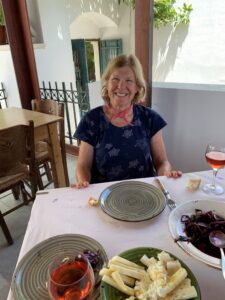
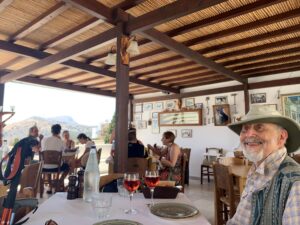
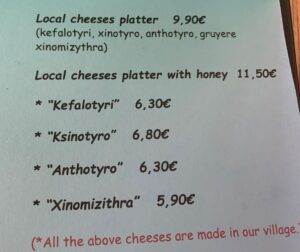
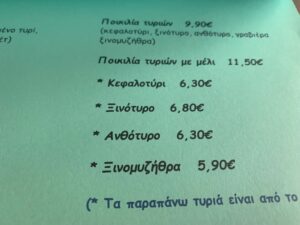
I copied the English and the Greek to practice my Greek.
These cheeses were incredibly delicious.
In the same village was a women’s cooperative preserving traditional patterns and techniques. The Women’s Association of Traditional Art began in 1987. As the brochure says: ” the traditional cloth is woven on a loom ( seen in photo) with great pride, out of respect towards their ancestors who passed on to them this technique practiced centuries ago, but which is still part of their culture today. ”
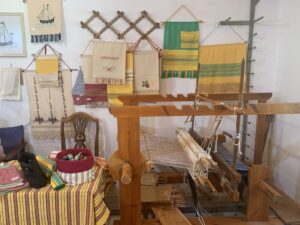
Our last stop was the famous so called Kouros still in the mountain side in Naxos. Although nicknamed a Kouros, it is actually an unfinished statue of Dionysus made in the 6thc BC.
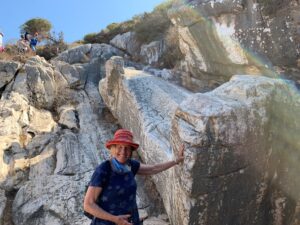
We returned to the main center of Naxos for another wonderful day of walking ancient streets and seeing off beat sites. My favorite discovery was this tiny shop “Micraasia” high up on a path leading to the top of the town. She carries creative items such as ecoprint tee shirts and necklaces made from “happy beads” by contemporary artist Yiorgas Syrigas.
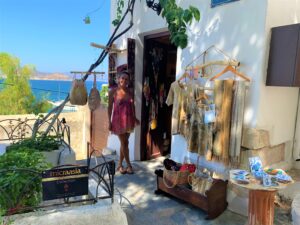
But every street is beautiful in the old city center of Naxos
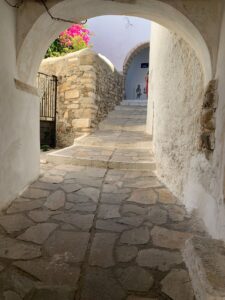
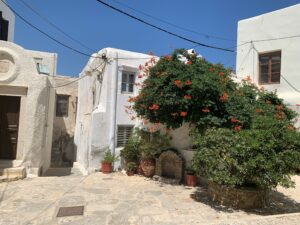
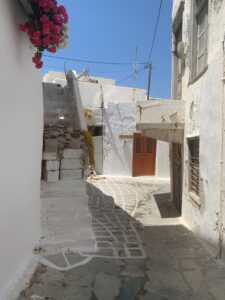
On our last night out in Naxos we ate grilled calamari. Here we are on the way to that dinner.
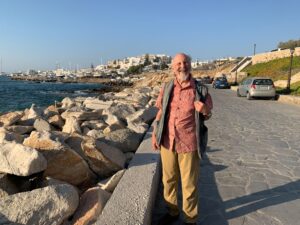
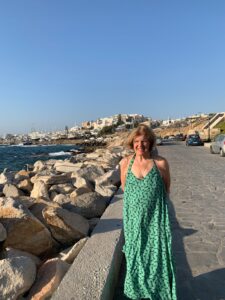
and one last iconic image
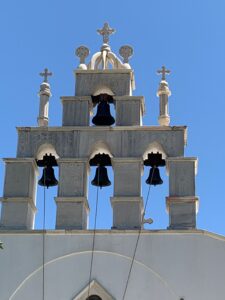
This entry was posted on August 10, 2021 and is filed under Uncategorized.








